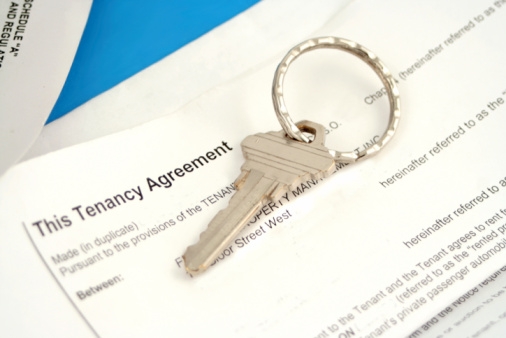With the cost of renting reaching record highs, anyone who is in a position to make a buy-to-let investment can expect to take in a considerable amount in rental yields if they know the market. However, house prices are also on the rise and are not expected to fall any time soon. So is property […]
With the cost of renting reaching record highs, anyone who is in a position to make a buy-to-let investment can expect to take in a considerable amount in rental yields if they know the market. However, house prices are also on the rise and are not expected to fall any time soon. So is property investment a good move in the current climate? Rebekah Commane looks at the market, with the help of an industry expert
 For those who are looking to take a further step on the property to ladder, buy-to-let is an increasing popular option and involves the purchase of a house or flat to rent out tenants. More and more lenders are getting involved in buy-to-let, which is a positive reflection on prospects for its future as an investment option.
For those who are looking to take a further step on the property to ladder, buy-to-let is an increasing popular option and involves the purchase of a house or flat to rent out tenants. More and more lenders are getting involved in buy-to-let, which is a positive reflection on prospects for its future as an investment option.
Research
There are many factors that will be taken into account by lenders when considering a borrower for a buy-to-let mortgage and it’s essential to do plenty of research into the sector before taking the leap. If you’re a first-time investor it’s wise to speak to a specialist buy-to-let mortgage broker who can help you to find the best deal for you.
For starters, you will need a minimum deposit of about 25 per cent to secure a mortgage, although a handful of lenders are offering these loans at 80 per cent loan to value.
As with a residential mortgage your income and/or assets will also be considered, particularly as a first-time buy-to-let investor, as will what you can make in rent and whether that will cover your repayments.
It can be more difficult for those who are self-employed to get a buy-to-let mortgage but it’s certainly possible, so long as the applicant has worked themselves for at least two years.
A lender will generally want to know what type of tenant will be renting your property, i.e. students or a family, so consider the area you want to buy in and who you should be targeting as tenants. The lender will have a surveyor value the property and give you an idea of what you can let it for so you should research the area and what is being charged on average for a similar property in that location before going ahead with a purchase.
Rental yield
Of course, what you can expect to charge in rent varies greatly from region to region, with London at the top of the pile and there are no signs of prices dropping there, due to the level of residents who can’t afford the high cost of a mortgage deposit to buy in the capital.
Charles Haresnape, managing director of residential mortgages at Aldermore, told What Mortgage that there are many variants that determine whether or not buy-to-let investment is a wise move.
“Whether or not buy-to-let investment is a wise move is dependent on a number of factors, including the level of borrowing you require and the rental yield you can expect, which can vary from location to location.
“That said, there is a general consensus that capital values of good rental properties are starting to improve and rental levels are strong. Forecasts are positive for the continuing growth of buy to let, given that house building continues to lag behind consumer demand and private rented housing has, to a large extent taken up the slack created by the sell-off of local authority housing over many years.”
Haresnape cited figures from LSL Property Services which show that August rents are at the second highest level on record, just £1 behind all-time the official record, set in October 2012. In August of this year they hit £743 per month.
The LSL research also found that gross yields on a typical rental property in the UK remained steady at 5.3 per cent in August. However, taking into account void periods between tenants and capital accumulation, total annual returns on an average rental property rose to 6.2 per cent in August, compared to 5.6 per cent in July.
With regards to whether buy-to-let lending is considered riskier than providing mortgages for residential purposes, Haresnape says that it is considered marginally riskier, which is the reason for the slightly higher interest rates than for owner occupied. However, the growth in number of lenders offering buy-to-let mortgages has led to an increase in the products available.
“Products are now available for first-time, amateur landlords, right up to professional, multi-property landlords.”
Interest only
While many lenders are backing out of interest-only lending on residential mortgages, this is not the case for buy-to let.
“The vast majority of borrowers request interest only, treating the buy-to-let property as a long term investment, which will eventually be sold to repay the loan capital”, Haresnape advises.
“It is a very different proposition to borrowing for a main residence on an interest only basis.”
Management
There are numerous responsibilities which come along with becoming a landlord, including maintenance of the property.
Some choose to hand this over to a management company, while others prefer to take on the maintenance themselves.
“It really depends whether the landlord has the time and experience to manage properties and whether they are locally situated,” adds Haresnape.
“Many do choose to use a management company but the costs of this must be factored into the costs of owning a buy-to-let.”
Some other aspects of buy-to-let lending to consider include whether you intend to move into the property yourself down the line. If you do you will have to inform your lender and have any remaining mortgage amount switched to residential borrowing. To not do is considered fraud.
Fees
It’s also very important to be aware of the fees involved in this type of lending.
Lender arrangement fees tend to be in the region of 1-3 per cent of the loan amount but currently there are a lot of fixed rate fee offers on the market.
Arrangement fees can often be added to the loan. You may also come across lender booking fees, which are charged to secure a particular rate for a specific period of time. Booking fees must be paid upon submission of the buy to let mortgage application.
Then there are administration fees which are often charged by brokers. This fee usually pays for the valuation of the property and associated processing costs. If you don’t use a broker you will still have to pay for the valuation. Obviously if you do use a broker, you may have to pay a broker fee. Once the mortgage has been agreed you will need to pay the legal costs too. Finally, you should look to see if the mortgage you want has any Early Redemption Charges. This information will be clearly explained up front by a broker or lender.
All in all, if you can raise the price of a deposit, buy-to-let investment can be very profitable but, as with any property purchase, knowing what to expect and the overall costs is a must before going ahead. There is a lot of money to be made with the right property in the right location with the right at the right time and now could be it.














